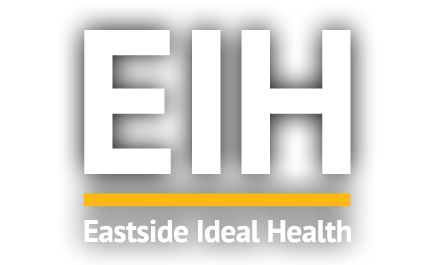Exploring Non-Invasive Solutions for Joint Pain
Joint pain can hinder everyday life and athletic performance, but you don’t always need surgery or injections. At Eastside Ideal Health’s Sports Medicine, we emphasize effective, non-invasive strategies—like movement, nutrition, manual therapies, and technology—to help you recover naturally and sustainably.
Key Insight: A 2020 review by AHRQ confirms that non-invasive, non-pharmacological treatments—like exercise, spinal manipulation, and mindfulness—can significantly reduce chronic joint pain without opioids (AHRQ, 2020).
1. Therapeutic Exercise & Physical Therapy
- Rehabilitation exercises (e.g., strength, flexibility, balance) are first-line care for joint pain such as osteoarthritis (AAFP 2015).
- Blood Flow Restriction Training (BFRT) boosts muscle strength around painful joints using light loads—ideal for those with osteoarthritis (BFR Training Overview).
2. Manual Therapies & Chiropractic Adjustments
- Chiropractic joint manipulation, soft-tissue work, and mobilization reduce stiffness and improve function (PMC Review on Chiropractic 2013).
- These approaches enhance mobility, decrease pain, and support other therapies.
3. Aquatic & Low-Impact Therapies
- Aquatic therapy relieves joint stress while improving strength and flexibility (Aquatic Therapy Benefits).
- Beneficial for osteoarthritis and rehabilitation in a low-pressure environment.
4. Physical Modalities & Technological Aids
- Low-Level Laser Therapy (LLLT): Evidence shows it modestly reduces short-term joint pain in arthritis, tendonitis, and other conditions (LLLT Overview).
- Therapeutic Ultrasound: Systematic reviews support its safe use for pain reduction and improved function in knee osteoarthritis (Therapeutic Ultrasound Review).
| Approach | Purpose | Outcome |
|---|---|---|
| Exercise/PT | Strength & Flexibility | Reduced pain, improved function |
| Chiropractic | Alignment & Mobility | Enhanced motion, pain relief |
| Aquatic Therapy | Low-impact rehab | Better range of motion |
| LLLT & Ultrasound | Tissue healing | Reduced inflammation, pain |
5. Nutrition & Mind‑Body Practices
- Anti-inflammatory diets (rich in omega-3s, antioxidants) support musculoskeletal health (Evidence PT on Nutrition).
- Mindfulness and yoga reduce pain perception through stress relief and nervous system regulation (Mindfulness for Pain Management).
Patient Case Study
Tom, a 45-year-old runner, struggled with chronic knee discomfort from osteoarthritis. After 8 weeks of combined sports‑med sessions—including BFRT, aquatic therapy, adjustments, and laser—their pain dropped 60% and they returned to 10K training.
FAQs
Q: Can I avoid surgery with these methods?
A: Many patients do—while surgery has its place, non-invasive care significantly delays or even prevents invasive procedures.
Q: How do I know which therapy is right?
A: We tailor the plan based on your condition, goals, and response to treatment.
Q: How long until I feel better?
A: Some notice improvement within weeks; comprehensive recovery usually takes 6–12 weeks.
Why Choose Eastside Ideal Health’s Sports Medicine?
- Evidence-based, multi-modal care including exercise, manual therapy, aquatics, laser, and ultrasound.
- Clinical collaboration ensures efficient, safe recovery.
- Customized plans focused on natural, non-invasive pain relief and long-term performance.
Ready to explore non-invasive solutions for joint pain? Discover our full Sports Medicine services or call (425) 800‑6881 to begin your recovery today.

